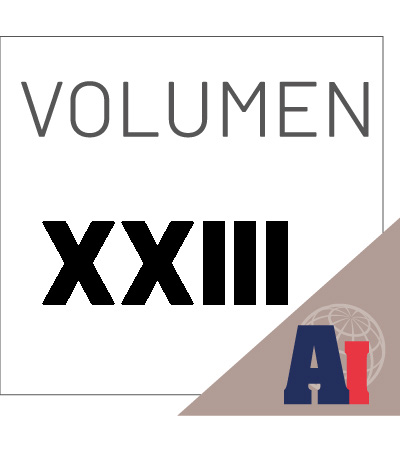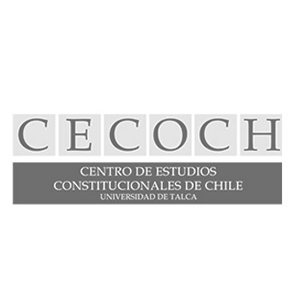La responsabilité international des groupes armés non étatiques et le droit des victimes aux réparations
Il est communément admis que les groupes armés quasi étatiques peuvent violer le droit international humanitaire et que, dans certaines circonstances, leurs membres peuvent commettre violations de droit pénal international et de droits de l’homme. Pourtant, à cause de la nature de ces groupes et le rôle controversé qu’ils jouent dans le droit international, le droit des leurs victimes à obtenir réparations est remis en question. Cet article décrit les questions juridiques autour de graves violations de droit international commises par ces groupes et argumente que leurs victimes ont le droit à obtenir réparations.
Details de l'article
Uso de licencias Creative Commons (CC)
Todos los textos publicados por el Anuario Mexicano de Derecho Internacional sin excepción, se distribuyen amparados con la licencia CC BY-NC 4.0 Internacional, que permite a terceros utilizar lo publicado, siempre que mencionen la autoría del trabajo y la primera publicación en esta revista. No se permite utilizar el material con fines comerciales.
Derechos de autoras o autores
De acuerdo con la legislación vigente de derechos de autor el Anuario Mexicano de Derecho Internacional reconoce y respeta el derecho moral de las autoras o autores, así como la titularidad del derecho patrimonial, el cual será transferido —de forma no exclusiva— al Anuario para permitir su difusión legal en acceso abierto.
Autoras o autores pueden realizar otros acuerdos contractuales independientes y adicionales para la distribución no exclusiva de la versión del artículo publicado en el Anuario Mexicano de Derecho Internacional (por ejemplo, incluirlo en un repositorio institucional o darlo a conocer en otros medios en papel o electrónicos), siempre que se indique clara y explícitamente que el trabajo se publicó por primera vez en el Anuario.
Para todo lo anterior, deben remitir la carta de transmisión de derechos patrimoniales de la primera publicación, debidamente requisitada y firmada por las autoras o autores. Este formato debe ser remitido en PDF a través de la plataforma OJS.
Derechos de lectoras o lectores
Con base en los principios de acceso abierto las lectoras o lectores de la revista tienen derecho a la libre lectura, impresión y distribución de los contenidos del Anuario por cualquier medio, de manera inmediata a la publicación en línea de los contenidos. El único requisito para esto es que siempre se indique clara y explícitamente que el trabajo se publicó por primera vez en el Anuario Mexicano de Derecho Internacional y se cite de manera correcta la fuente incluyendo el DOI correspondiente.
Références
Address of the President Woodrow Wilson to Congress on “The Situation in Our Dealings with General Victoriano Huerta at Mexico City”’ (Office of the historian - US Department of State, 20 April 1914), available at: https://history.state.gov/historicaldocuments/frus1914/d705.
Brownlie, Ian and Crawford, James, Brownlie’s Principles of Public International Law, Oxford, Oxford University Press, 2012.
Bucher, Andreas, “La compétence universelle civile”, Recueil des cours de l’Académie de Droit International de La Haye, vol. 327, Martinus Nijhoff Publishers, 2015.
Cassese, Antonio et al., Cassese’s International Criminal Law, 3rd. ed., Oxford University Press, 2013.
Cassese, Antonio, International Law, 2nd. ed., Oxford University Press, 2005.
Charter of the United Nations and Statute of the International Court of Justice, (829 UNTS 119), 26 June 1945.
Clapham, Andrew, “Human Rights Obligations of Non-State Actors in Conflict Situations”, International Review of the Red Cross, vol. 88, num. 863, 2006.
Clapham, Andrew, “Defining Armed Conflicts under the Additional Protocols: Is There a Need for Further Clarification?”, in Pocar, F., The Additional Protocols 40 Years Later: New Conflicts, New Actors, New Perspectives, International Institute of Humanitarian Law, 2017.
Clapham, Andrew, “The Concept of International Armed Conflict”, in Clapham, Andrew et al., The 1949 Geneva Conventions: A Commentary, Oxford University Press, 2015.
Clapham, Andrew, “The Rights and Responsibilities of Armed Non-State Actors: The Legal Landscape & Issues Surrounding Engagement”, Social Science Research Network Electronic Journal, 2010, available at: http://www.ssrn.com/abstract=1569636.
Comprehensive Agreement on Respect for Human Rights and International Humanitarian Law between the Government of the Republic of the Philippines and the National Democratic Front of the Philippines, 16 May 1998.
Convention (IV) respecting the Laws and Customs of War on Land and its annex: Regulations concerning the Laws and Customs of War on Land, The Hague, 18 October 1907.
Convention against Torture and Other Cruel, Inhuman or Degrading Treatment or Punishment, (1465 UNTS 85), 10 December 1984.
Crowe, Jonathan and Weston-Scheuber, Kylie, Principles of International Humanitarian Law, Edward Elgar, 2013.
Dumberry, P., “New State Responsibility for Internationally Wrongful Acts by an Insurrectional Movement”, European Journal of International Law, vol. 17, Issue 3, 2006.
Eatwell, Tatyana, “State Responsibility for Human Rights Violations Committed in the State’s Territory by Armed Non-State Actors”, Geneva Academy: Academic Briefing, num. 13, 2018.
Fernández de casadevante romani, Carlos, “International Law of Victims”, Max Planck Yearbook of United Nations Law, vol. 14, 2010.
Fortin, Katharine, The Accountability of Armed Groups under Human Rights Law, Oxford University Press, 2017.
Foster halabi, Samm, “Traditions of Belligerent Recognition: The Libyan Intervention in Historical and Theoretical Context”, American University International Law Review, vol. 27, Issue 2, 2012.
Gaeta, Paola, “Are Victims of Serious Violations of International Humanitarian Law Entitled to Compensation?”, in Ben-Naftali, Orna (ed.), International Humanitarian Law and International Human Rights Law, Oxford University Press, 2011.
Geneva Convention (I) for the Amelioration of the Condition of the Wounded and Sick in Armed Forces in the Field, 12 August 1949.
Gillard, Emanuela-Chiara, “Reparation for Violations of International Humanitarian Law”, International Review of the Red Cross, num. 851, 2003.
Guatemala Memory of Silence: Report of the Commission for Historical Clarification - Conclusions and Recommendations’, UN Doc. A/53/928, 1999.
Hannum, H., “The Status of the Universal Declaration of Human Rights in National and International Law”, Georgia Journal of International and Comparative Law, num. 25, 1996, p. 112.
Heffes, Ezequiel and Frenkel, Brian, “The International Responsibility of Non-State Armed Groups: In Search of the Applicable Rules”, Social Science Research Network Electronic Journal, 2017, available at: https://papers.ssrn.com/abstract=3130148.
Hessbruegge, Jan Arno, “Human Rights Violations Arising from Conduct of Non-State Actors”, Buffalo Human Rights Law Review, vol. 11, Article 3, 2006.
HRC, Guiding Principles on Business and Human Rights: Implementing the United Nations, “Protect, Respect and Remedy” Framework, 2011.
ICJ Reports 1949, Reparation for injuries (Advisory Opinion), International Court of Justice, 1949.
ICJ Reports 1969, North Sea Continental Shelf Cases, (Federal Republic of Germany/Denmark) (Federal Republic of Germany/Netherlands) (Judgment), International Court of Justice, 1969, p. 3.
ICJ Reports 1980, Case concerning United States diplomatic and consular staff in Tehran (United States of America v Iran) Judgement, International Court of Justice, 1980.
ICJ Reports 2001, LaGrand (Germany v United States of America), (Judgment), International Court of Justice, 2001.
ICJ Reports 2004, Avena and Other Mexican Nationals (Mexico v United States of America) (Judgment), International Court of Justice, 2004.
ILC, “Draft Articles on Responsibility of States for Internationally Wrongful Acts, with Commentaries”, Yearbook of the International Law Commission, 2001.
ILC, “Draft Conclusions on Identification of Customary International Law”, Yearbook of the International Law Commission, 2018.
ILC, “Fourth Report on State Responsibility, by Mr. Roberto Ago, Special Rapporteur-The Internationally Wrongful Act of the State, Source of International Responsibility (Continued)”, International Law Commission, 1972, Document A/CN.4/264 and Add.l.
ILC, Principle 1 of the ‘Principles of International Law Recognized in the Charter of the Nürnberg Tribunal and in the Judgment of the Tribunal Adopted by the International Law Commission at Its Second Session and Submitted to the United Nations General Assembly’, 1950.
International Committee of the Red Cross, How Is the Term “Armed Conflict” Defined in International Humanitarian Law?, 2008, available at: https://www.icrc.org/en/doc/assets/files/other/opinion-paper-armed-conflict.pdf.
International Convention for the Protection of All Persons from Enforced Disappearance, (2716 UNTS 3), 20 December 2006.
International Convention on the Elimination of All Forms of Racial Discrimination, (660 UNTS 195), 7 March 1966.
International Covenant on Civil and Political Rights, (999 UNTS 171), 16 December 1966.
International Law Association, “Resolution No. 2/2010: Reparation for Victims of Armed Conflict”, Report of the Seventy-Fourth Conference, 2010.
IT-03-66-T, Prosecutor v Fatmir Limaj et al (Trial Judgement), International Criminal Tribunal for the Former Yugoslavia (ICTY), 2005.
IT-04-82-T, Prosecutor v Boškoski & Tarčulovski (Trial Judgement), International Criminal Tribunal for the Former Yugoslavia (ICTY), 2008.
IT-04-84-T, Prosecutor v Haradinaj et al (Trial Judgement), International Criminal Tribunal for the Former Yugoslavia (ICTY), 2008.
IT-94-1, Prosecutor v Tadić (Appeals Chamber Decision on Jurisdiction), International Criminal Tribunal for the Former Yugoslavia (ICTY), 1995.
Jurisdiction of the Courts of Danzing (Advisory Opinion), Permanent Court of International Justice, 1928, num. 15, p. 18.
Klabbers, Jan, ‘“(I Can’t Get No) Recognition: Subjects Doctrine and the Emergence of Non-State Actors”, in Petman, Jarna and Klabbers, Jan, Nordic Cosmopolitanism: Essays in International Law for Martti Koskenniemi, 2003.
Kyriakakis, Joanna, “International Legal Personality, Collective Entities, and International Crimes”, in Gal-Or, Noemi et al. (eds.), Responsibilities of the Non-State Actor in Armed Conflict and the Market Place, Brill-Nijhoff, 2015.
Lauterpacht, Hersch, “The Subjects of International Law”, International Law. Being the Collected Papers of Hersch Lauterpacht, Cambridge, Cambridge University Press, vol. I, 1970.
Murray, Daragh, Human Rights Obligations of NSAG, Hart Publishing, 2016.
Paust, Jordan J., ‘Armed Opposition Groups’ in Noortmann, Math, Reinisch, August, and Ryngaert, Cedric (eds.), Non-state actors in international law, Hart Publishing, 2015.
Protocol Additional to the Geneva Conventions of 12 August 1949, and relating to the Protection of Victims of International Armed Conflicts (Protocol I), 8 June 1977.
Protocol Additional to the Geneva Conventions of 12 August 1949, and relating to the Protection of Victims of Non-International Armed Conflicts (Protocol II), 8 June 1977.
Rawford, James, State Responsibility: The General Part, First paperback ed, Cambridge University Press, 2014.
Reinisch, August, “The Changing International Legal Framework for Dealing with Non-State Actors”, Non-State Actors and Human Rights, Oxford University Press, 2005.
Report of the International Commission of Inquiry on Darfur to the United Nations Secretary-General’ (2005).
Report of the International Law Commission: Seventy-First Session (29 April-7 June and 8 July-9 August 2019)’ (International Law Commission 2019).
Rome Statute of the International Criminal Court, (2187 UNTS 3), 17 July 1998.
SCSL-2004-16-AR72(E), SCSL-2004-16-AR72(E), Decision on Challenge to Jurisdiction: Lomé Accord Amnesty (Appeals Chamber), Special Court for Sierra Leone, 2004.
Sivakumaran, Sandesh, “Binding Armed Opposition Groups”, International and Comparative Law Quarterly, vol. 55, num. 369, 2006.
The Geneva Academy of International Humanitarian Law and Human Rights, The War Report: Armed Conflicts in 2018, Geneva Academy, 2019, available at: https://www.geneva-academy.ch/research/our-project/detail/30-the-war-report.
Truth and Reconciliation Commission, Witness to truth: final report of the truth and reconciliation commission-Sierra Leone, Graphic Packaging, 2004, available at: http://www.aspresolver.com/aspresolver.asp, Volume 1, Chapter one.
UNGA, [Resolution 60/147], Basic Principles and Guidelines on the Right to a Remedy and Reparation for Victims of Gross Violations of International Human Rights Law and Serious Violations of International Humanitarian Law, 2005.
UNGA, “Declaration on Principles of International Law Concerning Friendly Relations and Co-Operation among States in Accordance with the Charter of the United Nations”, A/RES/2625 (XXV) (1970).
Universal Declaration of Human Rights, UNGA Res 217 A(III) (UDHR), adopted 10 December 1948.
UNSC, The Situation in Afghanistan, Resolution 1214, 1998.
UNSC, The Situation in the Democratic Republic of the Congo, Resolution 1417, 2002.
Vienna Convention on the Law of Treaties, (1155 UNTS 331), 23 May 1969.
Walter, Christian, “Subjects of International Law”, Max Planck Encyclopaedia’s of International Law, 2007.


































